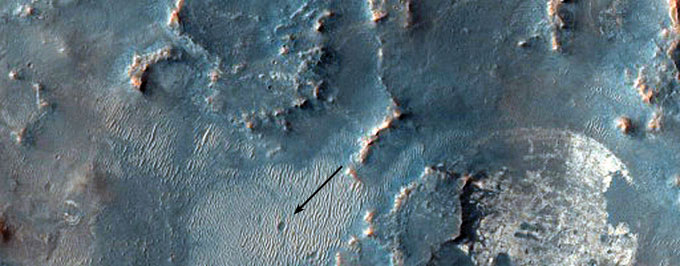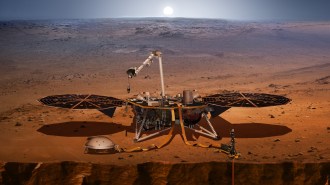What the Perseverance rover’s quiet landing reveals about meteor strikes on Mars
The rover’s arrival was a rare chance to see how the Red Planet absorbs energy from impacts

Caption: NASA’s Perseverance rover (shown touching down on Mars in February) landed a few thousand kilometers away from the lander InSight, which attempted to use seismic waves to detect Perseverance’s arrival.
JPL-Caltech/NASA








